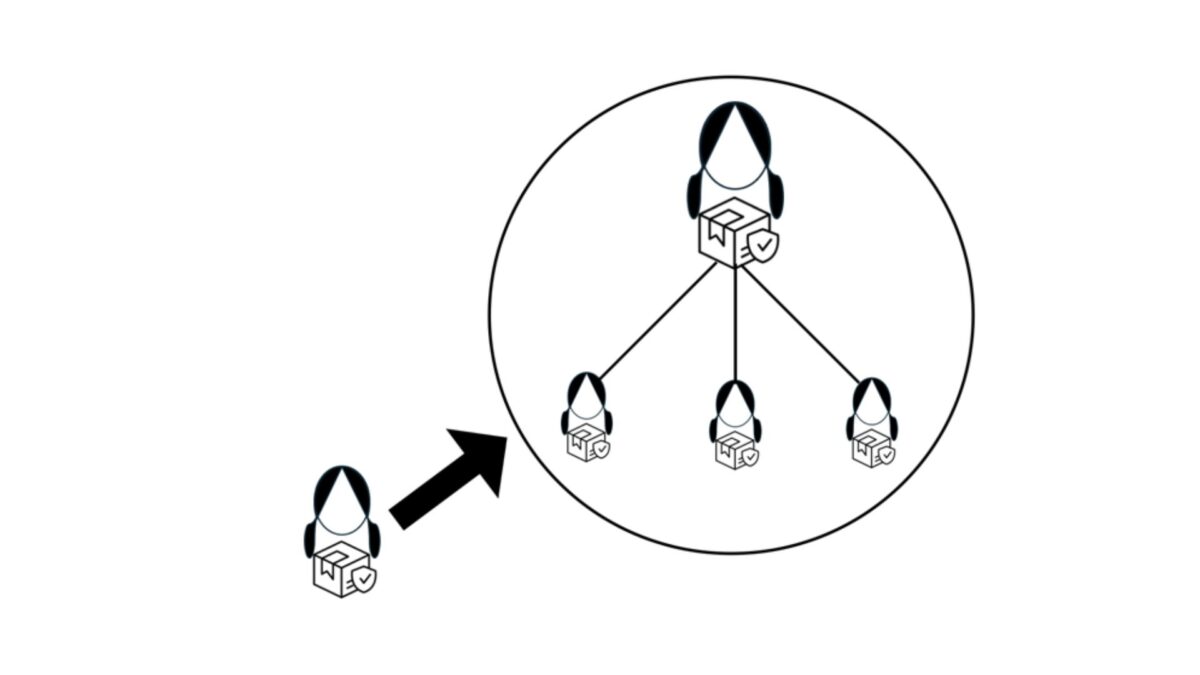Scaling the Product Owner
Scaling the Product Owner
Play Description
Pattern Summary
Scaling Product Ownership makes it possible for multiple teams to develop a product or solution that aligns with a cohesive, consistent product vision.
Related Patterns
Product Management, Chief Product Owner, Solution Management, Lean Portfolio Management, Product Owner Team, Product Operating Model, Scaling Structures, Scaling Product Ownership, Scaling Roles
Symptom Categories
Overtasked/Overallocated Individual, Strategic Alignment, Product Vision, Prioritization, Stakeholder Alignment, Dependency Management, Organizational Structure
Symptoms Addressed
Detailed Description
Scaling Product Ownership makes it possible for multiple teams to develop a product or solution that aligns with a cohesive, consistent product vision.
Scaling the Product Owner extends product ownership and product management efforts — such as setting development priorities — by having one or more Lead Product Owners who work with one or more Product Owners to determine unified product strategy. The creation of a Lead Product Owner makes it easier to have a cohesive product strategy, consistent product goals, and shared work priorities (such as a shared Product Backlog) for large products, solutions or portfolios of products.
A Lead Product Owner is given different titles, different levels of authority and different areas of responsibility, depending upon the needs of the product and the organization. The title and responsibilities also may differ depending upon the scaling framework the organization is using.
In Frameworks
There are multiple ways to scale the Product Owner, but the most common way is to identify an individual to serve as the lead Product Owner. This person is primarily accountable for the strategic work for the product — product vision, product goals and product roadmaps — leaving planning for a specific team’s work to another individual.
In Scrum@Scale (Scrum@Scale Scaling the Product Owner), an individual Product Owner works with each team and coordinates with a Chief Product Owner who owns a consistent Product vision. Also see the ScrumPLoP pattern PO Team.
In SAFe (Scaled Agile Framework Product Manager), the lead Product Owner is known as a Product Manager who sets the strategy, while individual Product Owners work with each team to prioritize the tactical work. The Product Manager often defines the features while Product Owners define stories (Scaled Agile Framework Product Owner).
In LeSS (LeSS Scaled Product Owner), there is only one Product Owner who guides the product. That Product Owner works with developers on each team who refine the items on the backlog in alignment with the product vision.
In the Product Operating Model (Silicon Valley Product Group), product leadership would define problems to solve and desired outcomes, typically as OKRs, provide strategic context and product vision, and allow product owners and their teams to define both features and stories.
How to Use
- Identify an individual to serve as a lead Product Owner (Scrum@Scale allows for a person to serve both in this role and as a product owner in a team)
- Together, define the accountabilities of the lead Product Owner when compared to the other Product Owners or Developers on the Product Owner Team.
- Use the Product Ownership Coordination patterns, like MetaScrum and Shared Product Backlogs to align and coordinate work.
Evidence of Success
- All the teams are working toward clear, shared goals and objectives (example OKRs)
- The lead Product Owner is not overworked or over-tasked.
- The teams are making progress toward their shared business goals and objectives rather than a feature or project (Outcome Based Roadmaps).
Tags/Keywords
Chief Product Owner, Product Owners, SAFe Product Manager, SAFe, LeSS, Scrum@Scale, Marty Cagan
Use When…
The “Scaling the Product Owner” pattern is best used when:
- An organization will use this pattern when the work involved in Product Ownership cannot be easily completed by a single individual due to product size and/or complexity. Ideally, scaling the Product Owner will improve product planning quality and throughput, increasing the rate at which valuable features are delivered to customers by having more work ready on the Product Backlog for teams to develop than a single individual can provide.
Do not use this pattern when:
- It is NOT necessary to use this pattern when a single Product Owner working with a single team can define and deliver valuable features at a rate that satisfies the customer.
- Scaling the Product Owner introduces both coordination and decision-making complexity. It also can increase decision-making delays (decision-latency).
- There is a risk that teams and team product owners could become order takers and not solution creators. As a result, it should only be used when the benefits outweigh the costs and risks. Avoid taking power away from the product owner and agile team (centralized decision making).
Advantages
- Allows for increased coordination and collaboration across members of a Product Team and efforts
- Fosters identification of cross-team dependencies and potential impediments for resolution
- Adds structure to otherwise organic communications, leading to more predictable interactions
Disadvantages
- Requires an investment of time among the Chief Product Owner (or equivalent), Product Owners, and Product Owner Teams across an organization (though Scrum@Scale allows for a product owner to also play Chief Product Owner).
- Can increase decision-making delays (decision latency) as well as disempower product owners and teams, increasing risk (though as we have noted, there are strategies to address these risks).
Additional Notes
Sources
1. Cagan, Marty, "Product Manager vs. Product Owner", December 6, 2011
https://www.svpg.com/product-manager-vs-product-owner/
2. Cagan, Marty, "Transformed. Moving to the Product Operating System", Wiley, Hoboken New Jersey, 2024
3. Edmondson, A. C., & Cha, S. E. (2017, February 10). How Spotify balances employee autonomy and accountability. Harvard Business Review. https://hbr.org/2017/02/how-spotify-balances-employee-autonomy-and-accountability
4. Scaled Agile, Inc. (n.d.). Product management. Scaled Agile Framework. https://scaledagileframework.com/product-management/
5. Scaled Agile, Inc. (n.d.). Product owner. Scaled Agile Framework. https://scaledagileframework.com/product-owner/
6. Scrum Inc. (February 2022) The Scrum at Scale® guide. https://www.scrumatscale.com/scrum-at-scale-guide-online/#Scaling-the-product-owner
7. Seiden, Joshua , "Outcomes Over Output: Why customer behavior is the key metric for business success" (revised edition). Sense & Respond Press, US, 2023

